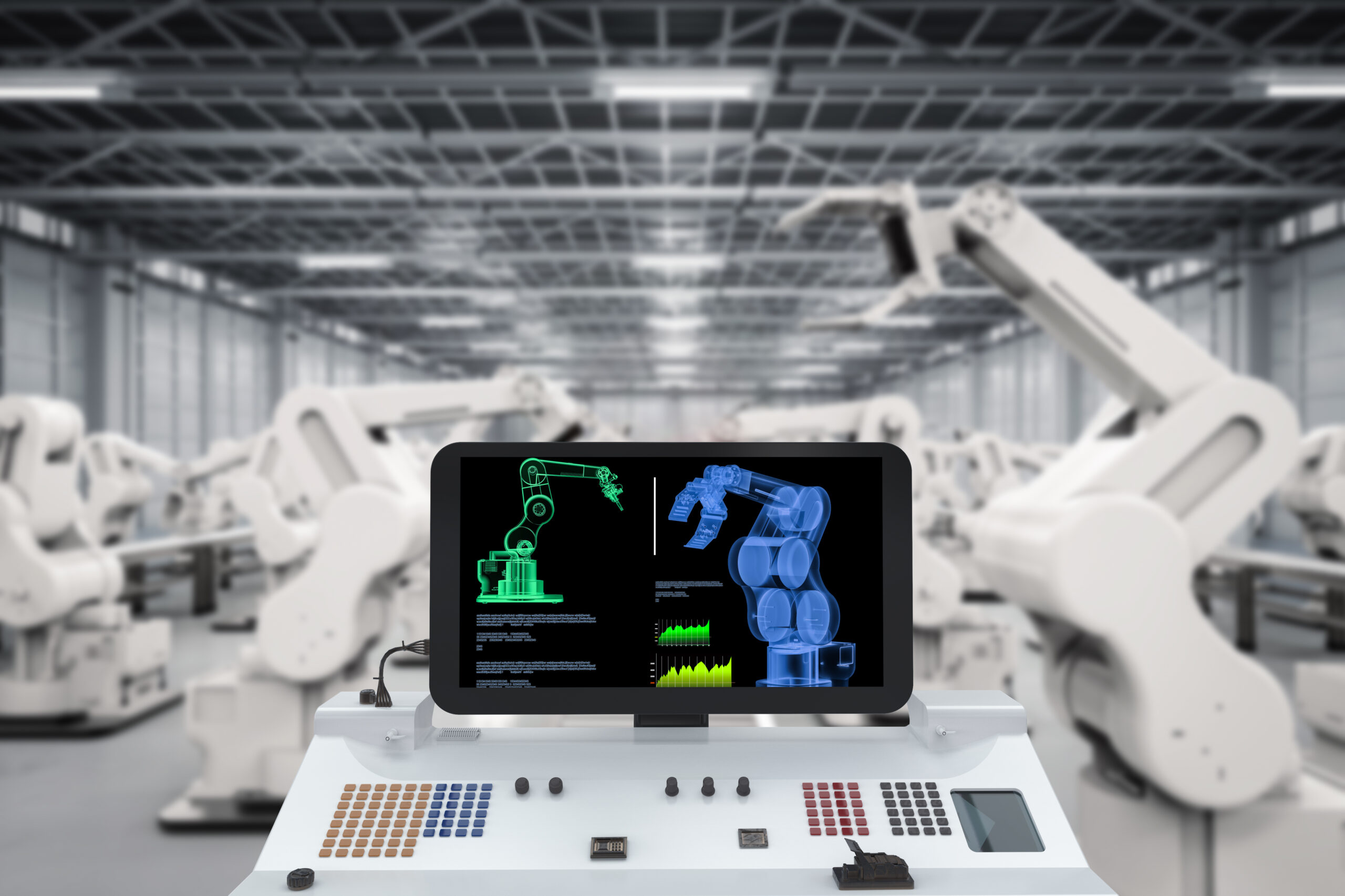The evolution of industrial simulations

The adoption of digitization in the manufacturing industry has accelerated in recent years. Common objectives such as quality assurance, improved costs and waste reduction has encouraged many manufacturing companies to begin their digital transformation journeys. These companies readily embrace technologies, such as IoT and advanced robotics, with simulation being among the leading in the creation of smart factories.
Using data gathered within their own facilities, manufacturers can build a comprehensive digital twin that can simulate their entire plant and production processes, allowing them to identify areas that could be improved, test potential changes, and monitor entire systems. This helps manufacturers gain a better understanding of both product and production behavior, leading to more optimized production lines, more efficient production systems and increased sustainability.
While industrial simulation technology has already delivered impressive results for many companies, it can evolve further with a more compact digital twin that boasts accessibility and flexibility.
The simplicity of the executable digital twin
Normally, digital twins are large and computationally expensive necessitating significant server infrastructure to run. A comprehensive digital twin can become complicated and slow since it encompasses an entire industrial system with a high degree of accuracy. The executable digital twin, or xDT, is an executable self-contained simulation model which does not require separately installed solver software. Essentially, the xDT emphasizes speed and portability to bring the power of the digital twin to the shop floor.
Utilizing AI-driven reduced order models (ROMs), the xDT offers accurate inferences using far less computing power. Building off of the comprehensive digital twin, it leverages ROMs to simplify parts of a complex system by using existing data to train highly accurate artificial intelligence (AI) models. This reduces the computational requirements needed to simulate the entire model. More hardware can run these simpler models, thus enabling greater access to the xDT and the benefits it provides.
Benefits of the executable digital twin
The executable digital twin builds on the promises of the comprehensive digital twin while being leaner, faster, and more compact. Both these types of digital twin allow manufacturers to see real time changes in their machines and systems, but the executable digital twin is better suited to second-by-second monitoring and small-scale changes. Real-time simulations enable manufacturers to:
- Quickly modify machines on the shop floor
- Optimize future machines and production systems
- Detect mechanical anomalies for preventative maintenance needs and better downtime scheduling
Additionally, because the xDT uses physics-aware models and AI to infer some behaviors, it can simulate processes that are usually hard to monitor. For example, this ability can be especially useful for managing devices such as heat exchangers. Simulating energy consumption helps manufacturers learn how to augment the machine’s processes to maximize efficiency and make each machine eco-friendlier. Ultimately, this can reduce carbon emissions, helping companies meet their sustainability goals.
Security and simulation
While digitalization and the digital twin offer extensive benefits, many companies are concerned with the security risks a highly connected digital environment brings. It is imperative to ensure that production models are tested, validated and cybersecure before they are ever run-in production.
Fortunately, the level of security capabilities has increased significantly through advances in cloud technology. Trusted cloud providers and hyper-scalers continuously improve upon their security capabilities to the extent that state-run entities such as NASA and the US Airforce have begun to trust them to safeguard their information and support their systems.
The best way to ensure operations remain secure while undergoing a digital transformation is by working with large, credible providers who have the resources to respond to the constantly evolving world of cyber threats. Siemens is one of these companies that has the processes, technology, and expertise to help organizations overcome security challenges while embarking on their digital transformation journeys.
Going further with simulations
The xDT requires less computational power while still providing manufacturers with valuable real-time simulations that run parallel with their physical machines. Using the xDT, companies can optimize their processes while reducing costs. As digital twins become more accessible, companies get closer to actualizing the industrial metaverse, where entire factories are perfectly simulated and operating in lockstep with their physical counterparts.
Investing in simulation technology is only the first step towards creating the industrial metaverse that will help manufacturers collaborate from anywhere, stimulate partnerships, and understand their problems and processes better to find the most optimal solutions. Learn how to push the boundaries of simulation technology by listening to our most recent podcast “Exploring simulation for industrial systems-episode 2” here.
Siemens Digital Industries Software helps organizations of all sizes digitally transform using software, hardware and services from the Siemens Xcelerator business platform. Siemens’ software and the comprehensive digital twin enable companies to optimize their design, engineering and manufacturing processes to turn today’s ideas into the sustainable products of the future. From chips to entire systems, from product to process, across all industries. Siemens Digital Industries Software – Accelerating transformation.


